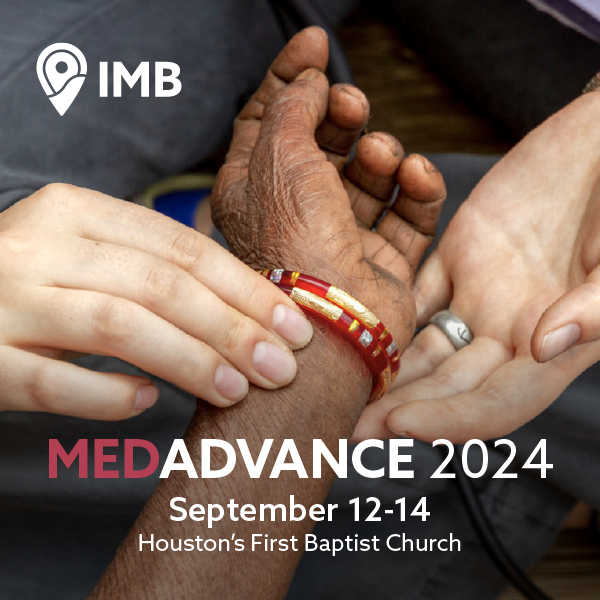
The Christmas cards are in the mail. The church pageants reenact the familiar story. Even our sermons highlight the same characters, which the carols, cards, and the plays portray so well.
We learn about grace, worship, sacrifice, and generosity from shepherds and magi. But if we want to learn about prayer at Christmas, the stars of the pageant don’t really tell the story. Instead, to learn about prayer we turn to the “bit players” in the Christmas story. Let’s pull the curtains back to get a glimpse of the heroes of prayer.
BELIEVE WHAT YOU PRAY (Luke 1:5-24)
Only two gospels tell the story of the birth of Jesus, but all four gospels waste no time introducing us to John the Baptist. Entwined in the birth narrative of John the Baptist, Luke presents an extreme emphasis on the power of prayer.
John’s parents are an elderly, childless couple, incapable of bearing children when we meet them. The husband is Zechariah, a priest, who has the duty of tending to the incense in the Temple. The Altar of Incense, emphasized three times (vv. 9,10,11), symbolizes prayer. A crowd gathered outside the Temple to pray (v.10), a subtle nod to the purpose of the incense.
Zachariah had been praying for a son (v. 13); but when an angel appeared and announced the coming birth, the old priest doubted (vv. 18-20). His faithless response was met with an immediate rebuke (vv. 19-23; 57-64). Unfortunately, like Zechariah, we often fail to pray with faith.
Americans love to pray but are often unclear about how, or if, God answers prayer. For instance, while nearly 80% of evangelicals pray, barely over a third of them believe their prayers influence God’s actions.
Charles Spurgeon once said, “If you believe in prayer at all, expect God to hear you. If you do not expect, you will not have. God will not hear you unless you believe He will hear you; but if you believe He will, He will be as good as your faith.”
Jesus Himself taught the importance of “believing prayer” when He said, “Therefore I tell you, whatever you ask in prayer, believe that you have received it, and it will be yours” (Mark 11:23-24).
God is sovereign and often overrides our unbelief, but we should never assume success in faithless prayer. Remember James said, “But let him ask in faith, with no doubting, for the one who doubts is like a wave of the sea that is driven and tossed by the wind. For that person must not suppose that he will receive anything from the Lord; he is a double-minded man, unstable in all his ways” (James 1:6-8). Believers need to believe what they pray.
WAIT WHILE YOU PRAY (Luke 2:25-32)
We don’t like it but it’s true. Prayer requires patience.
In the Christmas story, as told through the winding narrative of Luke, there briefly appears a mysterious man of prayer named Simeon (Luke 2:25-35). For our purposes, it is what he teaches us about prayer that matters. Simeon had learned how to wait in prayer.
He had been “waiting” (presumedly for quite some time); and he was now content finally to die when at long last, in answer to prayer, God would let him “depart in peace” (v. 29) since he said, “my eyes have seen your salvation” (v. 30).
The implication is that someone who had been waiting for a long time in prayer was suddenly rewarded for his patience. That is the lesson learned from the prayer life of Simeon.
The heroic prayer warrior George Müller once observed, “It is not enough to begin to pray, nor to pray aright; nor is it enough to continue for a time to pray; but we must patiently, believing, continue in prayer until we obtain an answer.” In the 21st century, our prayer lives are still blessed by patiently waiting.
DON’T STOP PRAYING (Luke 2:36-38)
If Simeon was a mystery, Anna was an anomaly. An elderly widow who lived a life of non-stop intercession is identified in Scripture as a “prophetess” (v. 36). Our interest in her prayer life is found in this brief description, “and then as a widow until she was eighty-four. She did not depart from the temple, worshiping with fasting and prayer night and day” (Luke 2:37). Anna was a full-time prayer warrior.
If she married her husband when she was a young teen, as most Israeli girls did; she would have been widowed in her early twenties. If those facts are correct, she had been praying in the Temple for approximately 60 years (v. 37).
We know that Moses fasted on two occasions for 40 days (Deuteronomy 9:9-18). Elijah fasted for 40 days (1 Kings 19:8). Jesus fasted for 40 days (Matthew 4:1-11). Along with our Savior, these devoted men stand as heroes in the ministry of prayer. But no one in the Bible spent 60 years fasting and praying except the enigmatic prophetess, Anna. The shepherds and magi may have captured our attention in the Christmas story, but no one deserves our admiration more than Anna, the woman of prayer.
What lesson on prayer do we learn from Anna? The most obvious lesson is that prayer persists, and prayer warriors never stop praying. In fact, we “pray without ceasing” (1 Thessalonians 5:17).
The Christmas season may bring you a lot of blessings. Few could be more enriching than learning to pray.
















